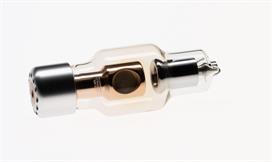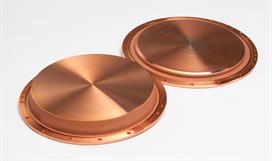
Scientific research have developed technologies that have later enabled breakthrough in healthcare and industry. One of these technologies is superconductors that serve today in MRI scanners and particle accelerators in cancer treatment that improve human life.
Luvata has been producing Niobium-based superconducting wires and cables for nearly 50 years and we are the world's leading producer of copper niobium-titanium based superconducting wire.
Over three decades we have participated in internationally renowned large-scale projects such LHC particle accelerator in CERN, fusion reactor ITER, light source project XFEL in Hamburg and many more involving Low Temperature Superconductors (LTS), hollow conductors and OFE high purity oxygen-free copper. As a result of this unmatched experience, we are recognized around the world as a leader in the development and manufacture of these specialist products.
- Particle accelerators such as the Large Hadron Collider (LHC)
- Fusion energy research magnets
- NMR spectrometers
- Light sources XFEL
- Superconducting Magnetic Energy Storage (SMES)
- Lab and speciality magnets
- Other scientific projects
Fusion energy - the sustainable solution
Fossil fuels were the energy source that helped shape 19th and 20th century civilization. Burning coal, oil and gas however, has proven highly damaging to our environment. As concerns grow over climate change and declining supplies of fossil fuels, fusion energy has the potential to provide a sustainable solution for our global energy needs.
Fusion is the process where two lighter atomic nuclei combine to form heavier nucleus. This process releases energy that can be used at the core of our Sun. What we see as light and feel as warmth is the result of a fusion reaction.
ITER - The world largest experimental nuclear fusion reactor
The International Thermonuclear Experimental Reactor (ITER) is a large-scale scientific experiment intended to prove the viability of fusion as an energy source.
Based on the 'tokamak' concept of magnetic confinement, the plasma - a hot, electrically charged gas - is contained in a doughnut-shaped vacuum vessel. Strong magnetic fields are used to keep the plasma away from the walls; these are produced by superconducting coils surrounding the vessel and by an electrical current driven through the plasma. These superconducting coils use superconductors that have zero resistivity when cooled below the critical temperature.
Copper hollow conductors are typically used in tokamak reactors in PF-coils and TF-coils. Luvata’s copper hollow conductors are also used in other types of fusion reactors. Hollow conductor formability and good electrical and thermal properties together with cooling possibilities make it useful for magnet coils.
Harnessing the energy produced by fusion could be the answer to our global energy concerns and what helps to shape our 21st century.


c77f.jpg)

